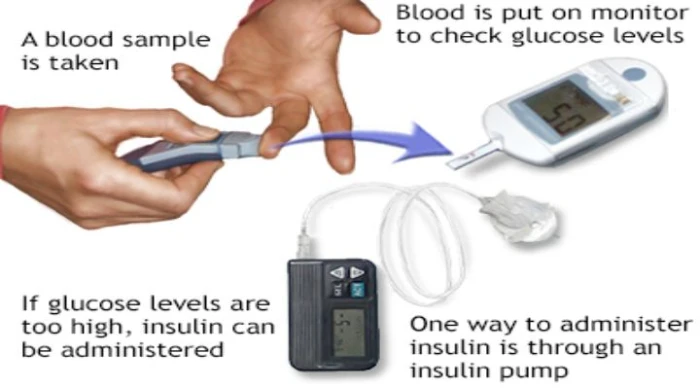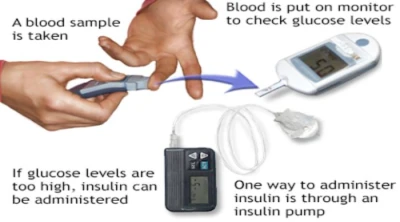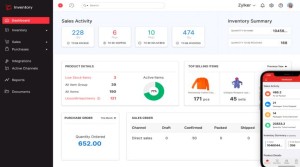Best Practices for Managing Blood Sugar Level Naturally
Keeping your blood sugar under control is very important for your overall health, especially if you have diabetes or are at risk of getting it.

Keeping your blood sugar under control is very important for your overall health, especially if you have diabetes or are at risk of getting it. When your blood sugar is steady, you feel better, have more energy, and are less likely to get sick from high blood sugar such as heart problems, kidney problems and nerve damage. People often use medicine to help manage their blood sugar levels. But many also look for natural ways to support their health. Healthy eating, regular exercise, managing stress, and getting enough sleep are all essential to controlling blood sugar. Let’s dive deeper into these natural methods and explore how they can help you maintain healthy blood sugar levels.
1. Dietary Adjustments
Eating the right food is a great way to keep your blood sugar from going too high or too low. It also depends on the carbs you eat and how the quantity makes a difference. Carbs become sugar in your body, affecting your blood sugar levels. For example, simple carbs like sugary drinks and white bread can raise your blood sugar quickly. Complex carbs like vegetables, whole grains, and fruits are digested more slowly which helps to stabilize your blood sugar. It’s also important to pay attention to portion sizes. Overeating any carb can still cause your blood sugar to spike.
Focus on Low Glycemic Index (GI) Foods
Foods that don’t raise blood sugar very quickly are called low glycemic index foods. These foods include whole grains like quinoa, barley, oats, beans, vegetables that aren’t starchy, and fruits like berries and apples. These foods don’t increase your blood sugar as fast as white bread, sugary snacks, and processed foods. When you eat low glycemic index foods, your blood sugar rises more slowly and steadily. This is because these foods are digested more slowly and absorbed into the bloodstream more slowly. Eating low glycemic index foods help to reduce your risk of these conditions.
Increase Fiber Intake
Fiber-rich foods are like a traffic jam for your digestive system. They slow down the process of breaking down food and absorbing nutrients including sugar. Eating more foods with soluble fiber found in beans, fruits, vegetables and whole grains are like adding a detour to the traffic. Fiber acts as a probiotic, feeding the beneficial bacteria in your gut. These bacteria help maintain a healthy balance, improve digestion, and even boost your immune system.
Protein and Healthy Fats
Eating carbs with protein and good fats can help regulate blood sugar levels. This means that your blood sugar won’t spike quickly after eating which is good for your overall health. Lean meats like chicken, fish, beans, and good fats like seeds, avocados, nuts, and olive oil can help you feel full for longer. This is because these foods take longer to digest, making you less likely to feel hungry soon again after eating.
Portion Sizes
Overeating, even good food, can raise blood sugar too high. You can eat smaller amounts especially of those foods with a lot of sugar, but because of careful monitoring of the portion sizes. Here, we have given some essential tips for controlling and monitoring portion sizes.
- Use Smaller Plates
By using smaller plates, your portion will look more extensive, even though smaller.
- Measure Your Food
By measuring your food, you can become more aware of how much you’re eating.
- Listen to Your Hunger and Fullness Cues
Don’t eat just because it’s time to eat or because there’s food in front of you. Pay attention to your body’s signals and stop eating when full. By following these tips, you can control your blood sugar level and improve overall health.
2. Physical Activity
Exercising often is a great way to keep your blood sugar under control without taking medicine. When you exercise, your body gets better at using insulin which means it needs less insulin to remove sugar from your blood. When you’re overweight, your body has to work harder to produce insulin to process the excess sugar in your bloodstream. By losing weight, you can reduce the burden on your pancreas and improve health consequently.
- Aerobic Exercise
Cycling, walking, swimming, or jogging for at least 150 minutes each week can be a great way to manage your blood sugar. When you do these exercises, your muscles use up sugar from your blood, helping keep your blood sugar levels healthy. Exercise can help you lose weight, feel less stressed, and be happier. If you need help to get started, talk to your doctor about an exercise plan.
- Strength Training
Lifting weights using resistance bands or doing bodyweight exercises 2-3 times a week helps control blood sugar. When you build muscle mass, your body becomes more efficient at using glucose; the sugar in your blood. This is because muscles are active tissues that require energy to function. When you build muscle, you create more glucose sinks in your body. These sinks help to absorb excess glucose from your bloodstream, preventing it from building up to harmful levels.
Additionally, building muscle mass can improve insulin sensitivity. Insulin is a hormone that helps your body absorb glucose from your blood. When your body is insulin resistant, it doesn’t respond effectively to insulin, leading to high blood sugar levels. Regular strength training can help improve your body’s insulin sensitivity, allowing it to use insulin more effectively and maintain healthy blood sugar levels.
- Post Meal Activity
Taking a short walk for 10 to 15 minutes after eating can help your blood sugar levels go down. Moving around helps your muscles use the sugar from the food, so your blood sugar doesn’t increase too much. If you can’t take a walk after eating, there are other things you can do to help regulate your blood sugar levels. For example, you can sit down for a few minutes after eating or do light stretching. You can also try eating a smaller meal or snack.
3. Hydration
Drinking lots of water is very important for human body. It helps to keep your blood sugar from getting too high. If you don’t drink enough water, your blood can become thicker which eventually can make your blood sugar go up. When your blood sugar is too high, you might feel tired, your eyes might get blurry, and you might feel thirsty.
Drinking water helps your body eliminate extra sugar, keeping your blood sugar from going too high. Drinking water all day is essential even if you aren’t thirsty. Drink lots of water each day and try to drink eight glasses or more.
4. Stress Management
Feeling stressed can raise your blood sugar levels. When you’re stressed, your body makes a particular hormone called cortisol. This hormone tells your body to make more sugar for energy. If your blood sugar is high for a long time, it can cause problems like diabetes.
-
Mindfulness and Meditation
Meditation and deep breathing can help you feel calmer and less stressed which can improve your overall well-being. They also help lower the stress response which is critical for better blood sugar control.
-
Physical Relaxation Techniques
Yoga, tai chi, and stretching exercises provide physical benefits and help manage stress. These activities lower cortisol levels and improve insulin sensitivity.
5. Adequate Sleep
-
Get Enough Sleep
Getting enough sleep is essential for your health. Not sleeping enough or poorly sleeping can make your body have trouble using sugar. This can make your blood sugar to rise. You should sleep 7 to 9 hours each night to help your body use sugar properly.
-
Establish a Sleep Routine
If you want to sleep better, try going to bed and waking up at the same time every day. Wait to drink coffee or eat big meals before bed. Make sure your bedroom is quiet and dark. Good sleep hygiene can positively impact hormone levels that regulate blood sugar.
6. Regular Monitoring
Even with natural strategies, it is essential to monitor blood sugar levels regularly. Watching how your lifestyle changes affect your blood sugar can help you choose the right foods and exercise plan.
When your blood sugar is too high, you might notice some signs. Taking certain supplements can help keep your blood sugar under control.
High Blood Sugar Symptoms
It’s essential to know the signs of high blood sugar. These signs include drinking a lot of water, going to the bathroom often, feeling tired, having blurry vision, and taking a long time for cuts to heal. If you have these signs for a long time, your blood sugar level should be considered as high. These conditions can cause problems like kidney disease, heart problems, and nerve damage. To stop these problems, you should change your lifestyle and check your blood sugar often.
Blood Sugar Levels
Blood sugar or glucose provides energy to the body’s cells. The body uses insulin, a hormone from the pancreas to control glucose. Keeping blood sugar within a reasonable range is essential for health and avoiding problems like diabetes, heart disease, and nerve damage. Regular fasting blood sugar is usually between 70 – 99 mg/dL, and after eating it should stay below 140 mg/dL. People at risk of blood sugar problems should check their blood sugar regularly.
Blood Sugar Normal Range
Maintaining blood sugar within the normal range is the ultimate goal for preventing health complications. As mentioned above, fasting blood glucose should remain between 70 and 99 mg/dL, and after meal level should stay under 140 mg/dL. When combined with regular monitoring and appropriate supplementation, these practices can help ensure that blood sugar remains in the ideal range.
Blood Sugar Monitor
A blood sugar monitor is a small tool that helps people check their blood sugar. People can learn how food, exercise, and medicine affect their sugar by checking often. This allows them to make good choices to keep their sugar steady. Checking often can also give clarity about health problems.
Wearable Blood Sugar Monitor
Innovative wearable blood sugar monitors such as Continuous Glucose Monitors (CGMs) provide daily glucose reading. These device when kept on the skin send alerts when blood sugar levels are too high or low, allowing to make immediate diet, exercise, or medication adjustments. CGMs are especially useful for people with diabetes who need constant glucose management and want more freedom from traditional finger-prick methods.
Supplements to Manage Blood Sugar Naturally
Some special foods can help control blood sugar. For example, chromium and magnesium are minerals that help your body use sugar better. This makes it easier for your cells to take in sugar. Other popular supplements include the following.
- Berberine
A compound found in various plants that helps to lower glucose production in the liver.
- Cinnamon
Known to improve insulin sensitivity and reduce blood sugar spikes after meals.
- Alpha-Lipoic Acid (ALA)
An antioxidant that can enhance glucose uptake and reduce oxidative stress related to diabetes. Eating these supplements with healthy food and exercising can help your body sugar stay steady.
Managing blood sugar levels naturally is a multifaceted approach that includes dietary modifications, regular physical activity, stress management, and adequate sleep and hydration. People can improve their blood sugar and feel good by choosing healthy daily activities. Natural ways to do this can be constructive. But if you have diabetes or are getting close to it, you should talk to a doctor to make a plan that works for you. Natural things can also help with medical treatment, so you would need less medicine and feel better.

Keeping your blood sugar under control is very important for your overall health, especially if you have diabetes or are at risk of getting it. When your blood sugar is steady, you feel better, have more energy, and are less likely to get sick from high blood sugar such as heart problems, kidney problems and nerve damage. People often use medicine to help manage their blood sugar levels. But many also look for natural ways to support their health. Healthy eating, regular exercise, managing stress, and getting enough sleep are all essential to controlling blood sugar. Let’s dive deeper into these natural methods and explore how they can help you maintain healthy blood sugar levels.
1. Dietary Adjustments
Eating the right food is a great way to keep your blood sugar from going too high or too low. It also depends on the carbs you eat and how the quantity makes a difference. Carbs become sugar in your body, affecting your blood sugar levels. For example, simple carbs like sugary drinks and white bread can raise your blood sugar quickly. Complex carbs like vegetables, whole grains, and fruits are digested more slowly which helps to stabilize your blood sugar. It’s also important to pay attention to portion sizes. Overeating any carb can still cause your blood sugar to spike.
Focus on Low Glycemic Index (GI) Foods
Foods that don’t raise blood sugar very quickly are called low glycemic index foods. These foods include whole grains like quinoa, barley, oats, beans, vegetables that aren’t starchy, and fruits like berries and apples. These foods don’t increase your blood sugar as fast as white bread, sugary snacks, and processed foods. When you eat low glycemic index foods, your blood sugar rises more slowly and steadily. This is because these foods are digested more slowly and absorbed into the bloodstream more slowly. Eating low glycemic index foods help to reduce your risk of these conditions.
Increase Fiber Intake
Fiber-rich foods are like a traffic jam for your digestive system. They slow down the process of breaking down food and absorbing nutrients including sugar. Eating more foods with soluble fiber found in beans, fruits, vegetables and whole grains are like adding a detour to the traffic. Fiber acts as a probiotic, feeding the beneficial bacteria in your gut. These bacteria help maintain a healthy balance, improve digestion, and even boost your immune system.
Protein and Healthy Fats
Eating carbs with protein and good fats can help regulate blood sugar levels. This means that your blood sugar won’t spike quickly after eating which is good for your overall health. Lean meats like chicken, fish, beans, and good fats like seeds, avocados, nuts, and olive oil can help you feel full for longer. This is because these foods take longer to digest, making you less likely to feel hungry soon again after eating.
Portion Sizes
Overeating, even good food, can raise blood sugar too high. You can eat smaller amounts especially of those foods with a lot of sugar, but because of careful monitoring of the portion sizes. Here, we have given some essential tips for controlling and monitoring portion sizes.
- Use Smaller Plates
By using smaller plates, your portion will look more extensive, even though smaller.
- Measure Your Food
By measuring your food, you can become more aware of how much you’re eating.
- Listen to Your Hunger and Fullness Cues
Don’t eat just because it’s time to eat or because there’s food in front of you. Pay attention to your body’s signals and stop eating when full. By following these tips, you can control your blood sugar level and improve overall health.
2. Physical Activity
Exercising often is a great way to keep your blood sugar under control without taking medicine. When you exercise, your body gets better at using insulin which means it needs less insulin to remove sugar from your blood. When you’re overweight, your body has to work harder to produce insulin to process the excess sugar in your bloodstream. By losing weight, you can reduce the burden on your pancreas and improve health consequently.
- Aerobic Exercise
Cycling, walking, swimming, or jogging for at least 150 minutes each week can be a great way to manage your blood sugar. When you do these exercises, your muscles use up sugar from your blood, helping keep your blood sugar levels healthy. Exercise can help you lose weight, feel less stressed, and be happier. If you need help to get started, talk to your doctor about an exercise plan.
- Strength Training
Lifting weights using resistance bands or doing bodyweight exercises 2-3 times a week helps control blood sugar. When you build muscle mass, your body becomes more efficient at using glucose; the sugar in your blood. This is because muscles are active tissues that require energy to function. When you build muscle, you create more glucose sinks in your body. These sinks help to absorb excess glucose from your bloodstream, preventing it from building up to harmful levels.
Additionally, building muscle mass can improve insulin sensitivity. Insulin is a hormone that helps your body absorb glucose from your blood. When your body is insulin resistant, it doesn’t respond effectively to insulin, leading to high blood sugar levels. Regular strength training can help improve your body’s insulin sensitivity, allowing it to use insulin more effectively and maintain healthy blood sugar levels.
- Post Meal Activity
Taking a short walk for 10 to 15 minutes after eating can help your blood sugar levels go down. Moving around helps your muscles use the sugar from the food, so your blood sugar doesn’t increase too much. If you can’t take a walk after eating, there are other things you can do to help regulate your blood sugar levels. For example, you can sit down for a few minutes after eating or do light stretching. You can also try eating a smaller meal or snack.
3. Hydration
Drinking lots of water is very important for human body. It helps to keep your blood sugar from getting too high. If you don’t drink enough water, your blood can become thicker which eventually can make your blood sugar go up. When your blood sugar is too high, you might feel tired, your eyes might get blurry, and you might feel thirsty.
Drinking water helps your body eliminate extra sugar, keeping your blood sugar from going too high. Drinking water all day is essential even if you aren’t thirsty. Drink lots of water each day and try to drink eight glasses or more.
4. Stress Management
Feeling stressed can raise your blood sugar levels. When you’re stressed, your body makes a particular hormone called cortisol. This hormone tells your body to make more sugar for energy. If your blood sugar is high for a long time, it can cause problems like diabetes.
-
Mindfulness and Meditation
Meditation and deep breathing can help you feel calmer and less stressed which can improve your overall well-being. They also help lower the stress response which is critical for better blood sugar control.
-
Physical Relaxation Techniques
Yoga, tai chi, and stretching exercises provide physical benefits and help manage stress. These activities lower cortisol levels and improve insulin sensitivity.
5. Adequate Sleep
-
Get Enough Sleep
Getting enough sleep is essential for your health. Not sleeping enough or poorly sleeping can make your body have trouble using sugar. This can make your blood sugar to rise. You should sleep 7 to 9 hours each night to help your body use sugar properly.
-
Establish a Sleep Routine
If you want to sleep better, try going to bed and waking up at the same time every day. Wait to drink coffee or eat big meals before bed. Make sure your bedroom is quiet and dark. Good sleep hygiene can positively impact hormone levels that regulate blood sugar.
6. Regular Monitoring
Even with natural strategies, it is essential to monitor blood sugar levels regularly. Watching how your lifestyle changes affect your blood sugar can help you choose the right foods and exercise plan.
When your blood sugar is too high, you might notice some signs. Taking certain supplements can help keep your blood sugar under control.
High Blood Sugar Symptoms
It’s essential to know the signs of high blood sugar. These signs include drinking a lot of water, going to the bathroom often, feeling tired, having blurry vision, and taking a long time for cuts to heal. If you have these signs for a long time, your blood sugar level should be considered as high. These conditions can cause problems like kidney disease, heart problems, and nerve damage. To stop these problems, you should change your lifestyle and check your blood sugar often.
Blood Sugar Levels
Blood sugar or glucose provides energy to the body’s cells. The body uses insulin, a hormone from the pancreas to control glucose. Keeping blood sugar within a reasonable range is essential for health and avoiding problems like diabetes, heart disease, and nerve damage. Regular fasting blood sugar is usually between 70 – 99 mg/dL, and after eating it should stay below 140 mg/dL. People at risk of blood sugar problems should check their blood sugar regularly.
Blood Sugar Normal Range
Maintaining blood sugar within the normal range is the ultimate goal for preventing health complications. As mentioned above, fasting blood glucose should remain between 70 and 99 mg/dL, and after meal level should stay under 140 mg/dL. When combined with regular monitoring and appropriate supplementation, these practices can help ensure that blood sugar remains in the ideal range.
Blood Sugar Monitor
A blood sugar monitor is a small tool that helps people check their blood sugar. People can learn how food, exercise, and medicine affect their sugar by checking often. This allows them to make good choices to keep their sugar steady. Checking often can also give clarity about health problems.
Wearable Blood Sugar Monitor
Innovative wearable blood sugar monitors such as Continuous Glucose Monitors (CGMs) provide daily glucose reading. These device when kept on the skin send alerts when blood sugar levels are too high or low, allowing to make immediate diet, exercise, or medication adjustments. CGMs are especially useful for people with diabetes who need constant glucose management and want more freedom from traditional finger-prick methods.
Supplements to Manage Blood Sugar Naturally
Some special foods can help control blood sugar. For example, chromium and magnesium are minerals that help your body use sugar better. This makes it easier for your cells to take in sugar. Other popular supplements include the following.
- Berberine
A compound found in various plants that helps to lower glucose production in the liver.
- Cinnamon
Known to improve insulin sensitivity and reduce blood sugar spikes after meals.
- Alpha-Lipoic Acid (ALA)
An antioxidant that can enhance glucose uptake and reduce oxidative stress related to diabetes. Eating these supplements with healthy food and exercising can help your body sugar stay steady.
Managing blood sugar levels naturally is a multifaceted approach that includes dietary modifications, regular physical activity, stress management, and adequate sleep and hydration. People can improve their blood sugar and feel good by choosing healthy daily activities. Natural ways to do this can be constructive. But if you have diabetes or are getting close to it, you should talk to a doctor to make a plan that works for you. Natural things can also help with medical treatment, so you would need less medicine and feel better.
Conversation
Latest Blogs
© Blog CoolCalculator, Explore CoolCalculator, your destination for the latest insights, tips, and updates on the world of online calculators. Stay informed and make your calculations smarter with our blog. ,
Designed
by Saad Media Team , Team Lead M.Rizwan Akhtar












